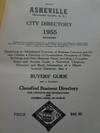
B-24 Liberator vs Ki-43 Oscar: China and Burma 1943
by Young, Edward M
- Used
- as new
- Paperback
- Condition
- As New
- ISBN 10
- 1849087024
- ISBN 13
- 9781849087025
- Seller
-
Forestdale, Queensland, Australia
Payment Methods Accepted
About This Item
Osprey Pub Co, 2012. New book, 80 pages, DUE41. During the late 1930s an armament race developed between bombers and the fighters that were bent on stopping them. The development of multi-engined, multi-gun, all-metal bombers forced a corresponding increase in fighter armament which, in turn, led to further attempts to improve bomber armament to ensure its ability to survive in the face of hostile fighters. The US Army Air Corps (USAAC) requested that powered gun turrets be fitted to its two principal long-range bombers, the B-17 Flying Fortress and the B-24 Liberator. In reviewing reports of air combat from Spain, China and the early stages of the war in Europe, the USAAC assumed that the greatest danger to the bomber would be attacks from the rear quarter, and thus took steps to ensure that both the B-17 and the B-24 had tail turrets. A powered turret above and behind the cockpit could deal, it was felt, with attacks from the frontal quarter so that the nose armament for the B-17 and the B-24 consisted of several hand-held 0.50-cal machine guns, but not a powered turret. German and Japanese fighter pilots would soon discover and exploit this weakness. The JAAF's response to the increase in bomber armament was to develop a so-called heavy fighter in parallel to the development of the Army's main fighter, the Ki-43 Hayabusa (known as the 'Oscar'), which sacrificed armament for superior manoeuvrability. Yet the inability of the Japanese aircraft industry to produce these heavier fighters (the Kawasaki Ki-60 and Nakajima Ki-44) in sufficient quantities meant that the JAAF had no alternative but to rely on the Ki-43 to intercept American heavy bombers. Under the ideal conditions that existed in the Burma and China theatres for much of 1943, the absence of escort fighters allowed the Ki-43 pilots to press home their attacks to devastating effect. . Soft Cover. As New. Illus. by Hector, Gareth. 8vo - over 7¾" - 9¾" tall.
Synopsis
Edward Young received his BA in Political Science from Harvard University and his MA from the University of Washington. Prior to his retirement to Seattle, Washington, he was a banker and financial analyst with assignments in New York, London, Tokyo, and Hong Kong. He is the author of several books for Osprey including Warrior 141: Merrill's Marauders.
Reviews
(Log in or Create an Account first!)
Details
- Bookseller
- Viceroy Books
(AU)
- Bookseller's Inventory #
- 005952
- Title
- B-24 Liberator vs Ki-43 Oscar: China and Burma 1943
- Author
- Young, Edward M
- Illustrator
- Hector, Gareth
- Format/Binding
- Paperback
- Book Condition
- New As New
- ISBN 10
- 1849087024
- ISBN 13
- 9781849087025
- Publisher
- Osprey Pub Co
- Place of Publication
- U.s.a.
- Date Published
- 2012
- Size
- 8vo - over 7¾" - 9&f
- Keywords
- B-24 LIBERATOR KI-43 OSCAR CHINA BURMA WW2 PTO AIRCRAFT
- Bookseller catalogs
- WW2 PTO Aircraft;
Terms of Sale
Viceroy Books
All prices are in Australian Dollars. All books are guaranteed to be "as described" and can be returned within 7 days of receipt for a full refund if not "as described".
About the Seller
Viceroy Books
Biblio member since 2006
Forestdale, Queensland
About Viceroy Books
We are an Online bookshop specialising in History, Military, and Miniature Modelling books, all at discount prices.


